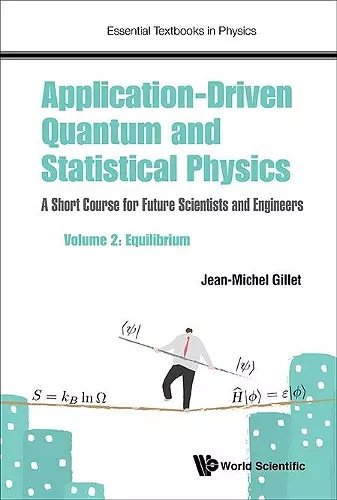Application-driven Quantum And Statistical Physics: A Short Course For Future Scientists And Engineers - Volume 2: Equilibrium
Format:Hardback
Publisher:World Scientific Europe Ltd
Published:14th Dec '18
Currently unavailable, and unfortunately no date known when it will be back

'This is definitely a book from which the student will be eager to learn … It is definitely a well-written textbook, whose fresh alternative approach will appeal to many students, as well as to their teachers, especially to those who would like to experiment new ways of teaching. Those familiar with the topics, will find the lively presentation engaging. The students will find learning from the book quite effective and motivating. Considering the style and the amount of topics treated in about 300 pages, this could well be a main text for students of science and engineering. Also physicists will find the book quite interesting and may consider it as a supporting material to more standard textbooks. In conclusion, this is a highly recommended textbook, which fully achieves its goal of transmitting knowledge in an original and thought-provoking way.'Contemporary PhysicsBridging the gap between traditional books on quantum and statistical physics, this series is an ideal introductory course for students who are looking for an alternative approach to the traditional academic treatment.This pedagogical approach relies heavily on scientific or technological applications from a wide range of fields. For every new concept introduced, an application is given to connect the theoretical results to a real-life situation. Each volume features in-text exercises and detailed solutions, with easy-to-understand applications.Building on the principles introduced in Volume 1, this second volume explains the structure of atoms, the vibration and rotation of molecules. It describes how this is related to thermodynamics through statistical physics. It is shown that these fundamental achievements help to understand how explosives and CO₂ can be detected, what makes a gecko stick to the ceiling, why old stars do not necessarily collapse, where nuclear energy comes from, and more.
ISBN: 9781786345578
Dimensions: unknown
Weight: unknown
336 pages